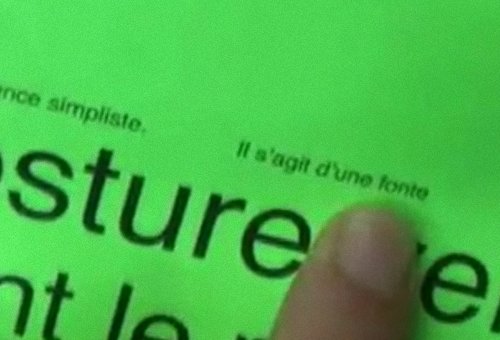
(The melting of the individual)
Let us test an apparently simplistic proposition. It is a melting from the vertical posture to the heaviest flabbiness. From standing to lying down, as usual, but this time without habitus, and for an exceptionally long duration. The idea is to let oneself melt little by little while allowing unexpected circulations, and insisting on the most subtle flows : one must not deny the potential losses of balance, the difficulties, the fragility of he who, with his eyes closed, doesn’t know any more at what moment his knee will touch the ground. The coming down isn’t necessarily regular, and one quickly comes across successive tensions needing to be studied thoroughly in order to feel what will or should let go afterwards, or slacken.
A chance to think the body in terms of mass. Let us look for this "de-glaciation" in sometimes remote body areas, inside the organs as well as the articulations, giving one’s whole mind to the glands or to the weight of the brain. One would avoid (could avoid) all conformism, symmetry, stages of leaning that look too clear, paths too well constructed. The time of action is given by music or sound lasting approximately ten minutes. The arduous ideal seems to me Pression pour violoncelle seul by Helmut Lachermann. One can prefer something else, but in any case the music chosen should not be a syrupy one. The preliminary time for observation can be long, and if you reach the ground before the gong (the end of the music), continue to bury yourself mentally, to make your stomach, sex, arms, weigh even more... The feeling of submersion would allow to forget the self-control brought by the gaze upon oneself or upon the others (an implicit control on what one’s own image would be). Fundamentally, this experience appeals to me because its wording allows a real work in motion, a chaotic one, immersed in sensations alternately pleasant and unbearable. Everybody can then enjoy concretely a moment of dance by the bottom, where the construction of a vertical is thwarted in order to better assume or become aware of our paradoxical tensions. Jean-François Pirson writes, about pedagogy: "In the second half of the XIXth century, the architecture of the bench and the master’s injunctions constituted an order preceding all teaching of subjects."
Contrary to this pedagogy of straightening, one could find within this assumed collapse a real opening to life’s anarchical movements...
Published in Revue Véhicule n°1, May 2010
